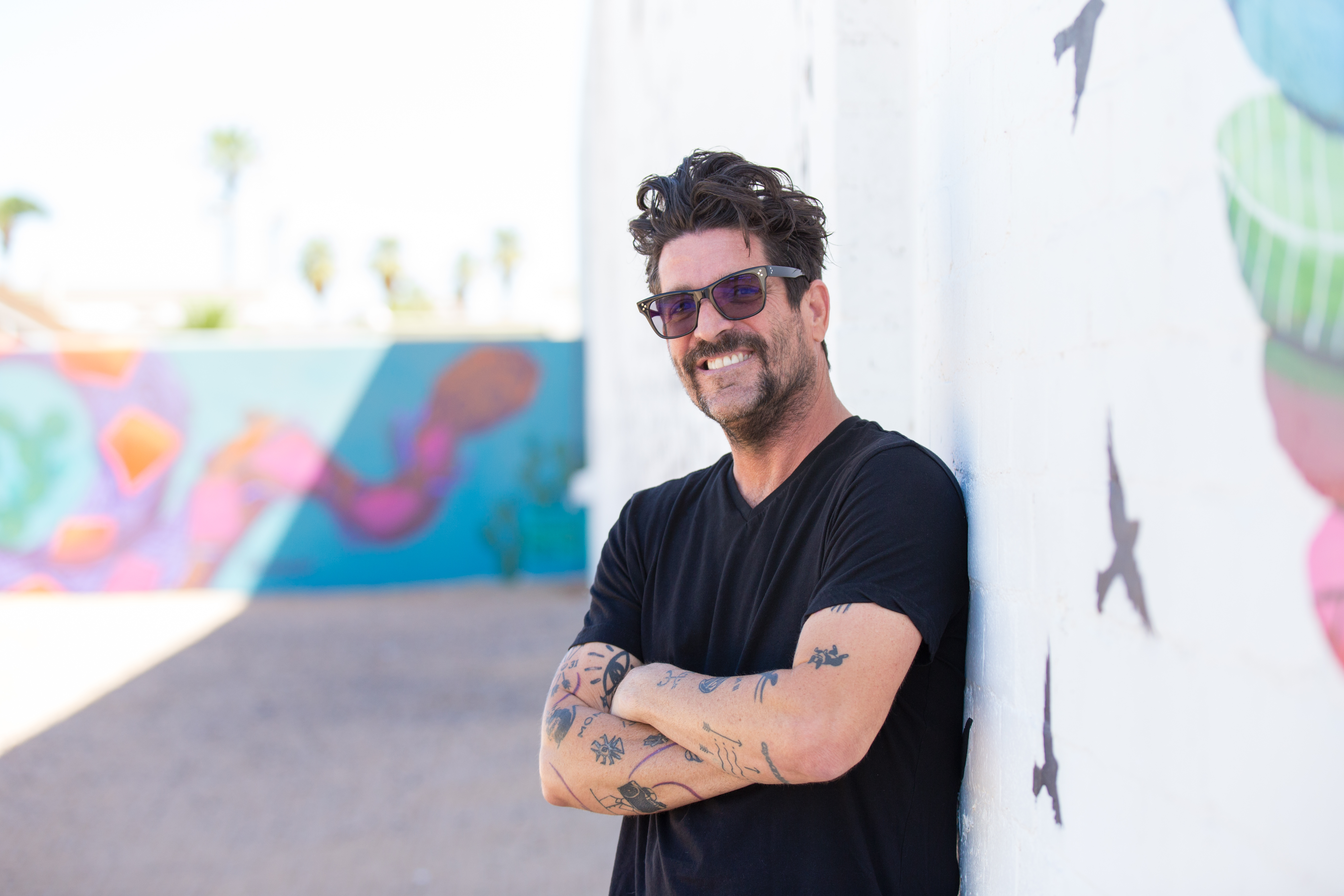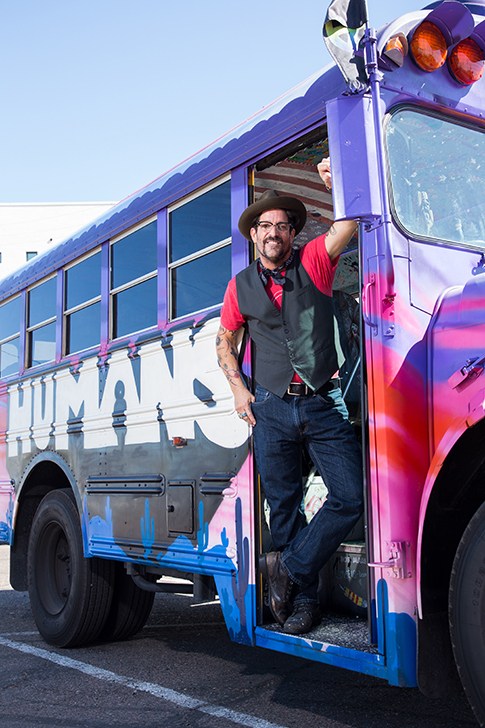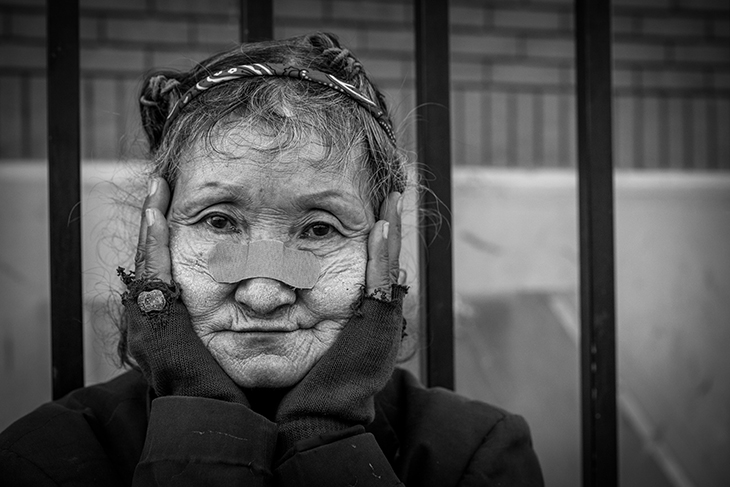I Have a Name

Writer Amanda Christmann
Photography by Jon Linton and Jon’s portraits by Claudia Johnstone (www.dasfotohaus.com)
[dropcap]W[/dropcap]hat’s in a name?
It’s a question we seldom ask ourselves, but for those whose struggles have led them to a life on the streets, hearing the sound of one’s own name is the only thread that keeps them connected to humanity.
Without a name, people who live with homelessness and addictions become invisible, anonymous faces in a world where people often choose to look the other way than to see their suffering.
The statistics are difficult to hear: There are 18,000 people living on the streets in Arizona. Nationwide, there are an estimated 500,000 people with no address to call home.
Beyond statistics though, it can be tough for those of us who do have a bed to sleep in each night to acknowledge the individual lives of people who do not. Whether we feel guilt, anger, or a sense of helplessness to change complex yet tragic situations, most of us avoid eye contact with homeless people as we pass them on the sidewalk or drive by in our cars.
Photographer Jon Linton’s work has opened the eyes of hundreds of thousands of people through his “I Have a Name” project, “Let’s Be Better Humans” campaign and non-profit, and “Pillow” project. He has shared hundreds of stories through poignant photographs and urged us to see a very human reality all-too-often ignored.
This month, Images Arizona is humbled to feature some of Linton’s work. Though it may be difficult to see, Linton’s work encourages us to begin both personal and cultural dialogues about homelessness.
It also compels us to look at people in the eyes, and to ask the question, “What is your name?” Because without a name, who are we?
facebook.com/theihaveanameproject
The I Have a Name Project Facebook page now has just shy of 58,000 likes. It is the largest single social media platform giving a voice to those who are suffering through homelessness.
“I Have a Name” is currently on display at the Arizona Historical Society’s Arizona Heritage Center,
1300 N. College Ave., Tempe, through Oct. 5.
The Story Behind the Stories
Though Linton has expressed himself through art for most of his life, his passion for advocacy is a well-tended flame that’s only grown with time.
As publisher and owner of ArtBook, a high-end magazine that showcased area artists, Linton became close to a man who shared office space. That man fell prey to an addiction to painkillers, and Linton watched helplessly as his friend’s addiction took over his life.
“Addiction is an ugly, ugly creature,” said Linton. “His descent to the bottom wasn’t a slow elevator ride; it was a freefall. In a short period of time, he lost his marriage, his business and his home, and he ended up homeless on the streets of Phoenix.”
That friend later died.
Though Linton was powerless over his friend’s addiction, he felt compelled to turn his life and death into a powerful message.
“I thought I would use art as an instrument to honor his memory at the same time give voice to people like him who were suffering on the streets,” Linton said.
“I thought, ‘I can take photographs and I could create a book.’ I was publishing a magazine and knew my way around the landscape of publishing. I had built a lot of relationships with galleries and was fairly certain I could convince a gallery in Phoenix to showcase my work and print.”
Like many great ideas, that first step often proves elusive. Linton struggled with how to approach the project—in particular, with how to respectfully take photographs and avoid exploiting his subjects.
“I wanted to approach them with a measure of dignity,” he explained.
“I talked about it for many years and found myself in a studio in New Mexico having a conversation with another artist. He said, ‘Jon, I’m tired of hearing you talk about this. Why don’t you take action?’”
It was more of a directive than a question, and it was the push Linton needed.
A short time later, he spotted a man who was panhandling at a stoplight at 32nd Street and Thomas. “I thought, ‘I’m going to park the car and talk to this man.’” That’s exactly what he did.
As they talked, Linton realized he hadn’t properly introduced himself.
“I said, ‘Forgive me, my name is Jon. I didn’t ask your name—what is your name?’ The man began to weep. He said, ‘You have no idea how long it has been since someone asked me who I am.’
“We were both in tears.”
That man’s name, Chuck Ridgeway, is one Linton will never forget, and in that moment, Linton’s mission became “I Have a Name” project.
Let’s Be Better Humans
Linton’s efforts have organically grown to include a non-profit called “Let’s Be Better Humans.”
“I wanted people to get involved and engaged,” he explained. “Liking and sharing content on social media was one thing, but motivating people to a call to action is another.”
He raised enough money to purchase a bus that is used today to serve people who are homeless in Phoenix. He’s also used it to initiate conversations throughout the Southwest, including Los Angeles’ Skid Row.
An Unintended Consequence
After hundreds of hours of taking to the streets to advocate for people facing homelessness, Linton needed a respite. He began photographing landscapes in quiet, beautiful places where his soul found peace.
Those photographs were quite good. The more he snapped, the more he sold. Today, Linton’s landscape photography has provided him with a full-time career that still enables him to engage in social activism.
I have a name
The “I Have a Name” project almost didn’t happen. Conceived in 2007, a local bank was originally planning to underwrite Linton’s book and photography. However, in 2009, with the Great Recession in full swing, they were forced to withdraw support.
Linton shelved the idea for a little while, but by 2011, he couldn’t help but notice that there was a whole new face to homelessness in metro Phoenix. Once-stable people who’d lost everything they’d had in the disastrous economy were living on the streets.
“I decided to start working on the project again, and I committed myself to finding ways to raise money,” he said.
A friend encouraged Linton to try social media. He put together a short video that went viral on social media, and in short order, he had enough money to print the now-sold-out book. His first opportunity for a gallery showing happened weeks later.
The Garden
Those who have ventured into downtown Phoenix and seen the MonOrchid building’s inspirational mural have experienced Linton’s passion firsthand.
The Garden, now one of the most Instagrammed spots in Phoenix, is a collaboration between Linton and Brian Boner, who worked together on Pillow, and the building’s owner, Wayne Rainey. It was paid for by donations through a GoFundMe campaign, and was completed in January 2016.
On the building’s west wall is a young boy standing upon a famous quote attributed to Mother Teresa. Hundreds of birds appear to flow from his watering can. To Linton, the birds represent freedom from the oppression of poverty; to Boner, they are a metaphor for community.
In a corner of the mural is a plaque inscribed with the message: “In honor and remembrance of those who have perished homeless on our streets.”
Pillow
Where do you lay your head to rest?
Is it safe?
Do you sleep?
In 2016, Jon Linton and Brian Boner collaborated to develop an installation called “Pillow.” Sponsored by Phoenix Institute of Contemporary Art and displayed from a container on Roosevelt Row, Pillow was a relatable way to humanize the improvised sleeping situations, environments and bedfellows of far too many people within our own community.
Its premise was simple. Linton respectfully approached people living on the streets and obtained permission to snap their photos using a Polaroid camera, then posed the question, “Where did you sleep last night?” They wrote their answers on the photo.
The results shook Linton.
“You’d hear, ‘I slept in a shelter,’ ‘I slept under a tree,’ ‘I slept in an alley,’” he said. “I expected to hear those things. The thing I didn’t expect to hear was, ‘I didn’t sleep,’ and that’s what I heard over and over again.”
The photos were hung from a wire—a thoughtful and apropos metaphor for the delicate balance between life and death that so many people are facing each day.
“Pillow began with the crazy notion that there isn’t anything soft about living on the streets,” Linton said. “It was jarring to me in some ways, because I spent so many years having dialogue with people on the street, yet I wasn’t prepared for what I found.”




